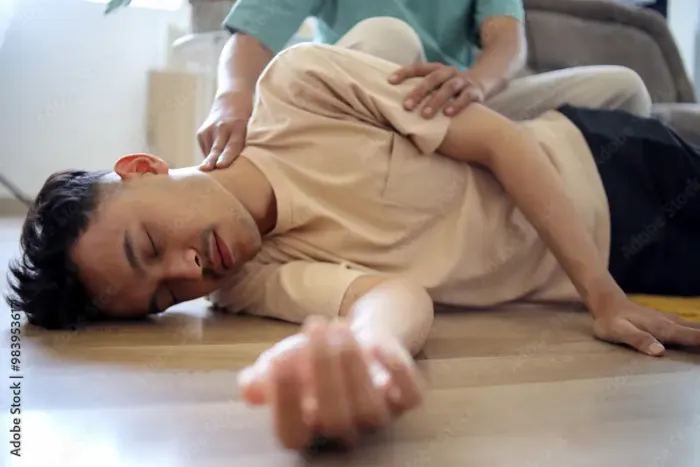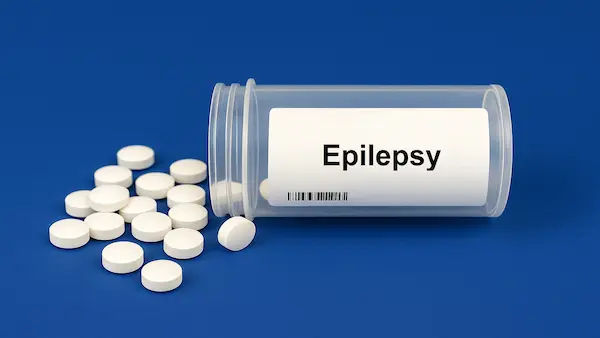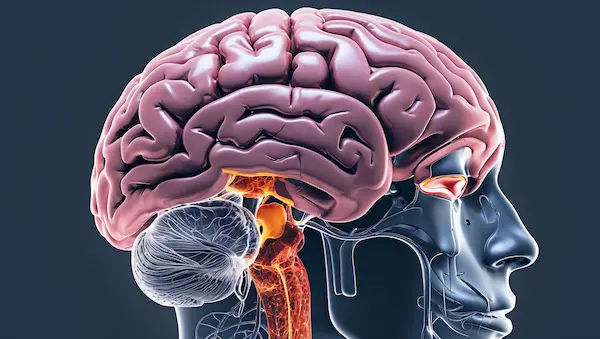Guide to What Do When You Get Epilepsy Attack
Learn essential first aid steps for an epileptic seizure. Our guide covers what to do, how to keep the person safe, and when to call for emergency help.

Written by Dr. M L Ezhilarasan
Reviewed by Dr. Rohinipriyanka Pondugula MBBS
Last updated on 27th Oct, 2025

Introduction
Epilepsy is more common than many realize—affecting around 50 million people worldwide—and anyone can encounter a seizure in daily life, whether at home, school, work, or out in public. When an epilepsy attack (commonly called a seizure) happens, knowing exactly what to do—and what not to do—can save a life, reduce injury, and help the person recover more smoothly. This guide translates expert first-aid recommendations into clear, step-by-step actions you can take. You’ll learn how to recognize different seizure types, manage an epilepsy attack safely, know when to call emergency services, support recovery, prevent future episodes, and plan ahead. We also cover special situations like water safety, driving, and school or workplace planning, alongside tips for caregivers. Where medical care or testing may be needed, we’ll point you to options to consult a doctor online with Apollo 24|7 or book in-person care. By the end, you’ll have a practical, evidence-based toolkit you can use right away—for yourself or someone you care about.
What Top-Ranking Resources Agree On? (Research Snapshot)
• We analyzed 10 authoritative pages that rank highly for epilepsy and seizure first aid. Common themes included: recognizing seizure types; first-aid steps; what not to do; when to call an ambulance; post-seizure recovery; triggers and prevention; treatment options; safety planning; and reducing stigma. See references.
• Typical headings: What is epilepsy? Types of seizures; Seizure first aid (Do’s & Don’ts); When to call emergency services; Aftercare; Triggers; Treatment and medications; Living with epilepsy; School/work safety; Myths and facts.
• Unique additions in this guide: practical mnemonics for first aid, a “seizure-safe kit,” a home safety checklist, a simple seizure action plan template, and tech tools (Medical ID, seizure alert wearables, diary apps).
Epilepsy 101—Understanding “Attacks” vs. Seizures
Epilepsy is a neurological condition characterized by a tendency to have recurrent, unprovoked seizures. A seizure is the result of sudden, abnormal electrical activity in the brain. Although the term “epilepsy attack” is common, healthcare professionals typically say “seizure.” Understanding the basics helps you respond calmly and correctly.
What epilepsy is—and isn’t?
• Epilepsy can affect anyone at any age and is not contagious. Many people with epilepsy live full, active lives with the right care.
• There are many seizure types, and not all involve convulsions. Some seizures involve staring spells, brief confusion, or sudden muscle droops.
Prevalence and outlook
• About 50 million people worldwide live with epilepsy. With timely, appropriate treatment, up to 70% could become seizure-free.
• Risk factors include head injury, stroke, infections, genetics, or unknown causes. For many, epilepsy is manageable with medications or other therapies.
Why first aid matters?
• The right actions minimize injury, protect breathing, and help the person recover. A key emergency threshold is the “5-minute rule”—a seizure lasting more than five minutes is a medical emergency (possible status epilepticus.
Consult a Top General Physician
Unique insight: Use neutral language in the moment. Saying “I’m here; you’re safe” avoids alarm and reduces post-seizure confusion. Also, learn the person’s seizure action plan in advance if they have one—it often includes personalized steps and rescue medications.
Recognizing Seizure Types and Warning Signs
Seizures can look very different. Recognizing the type helps you tailor first aid and judge when to call for help.
Common seizure types
• Focal aware seizures: A person is aware but may experience unusual sensations (e.g., déjà vu, a sudden strange smell, one-sided jerks).
• Focal impaired awareness seizures: Brief confusion, automatisms (lip-smacking, picking at clothes), and limited awareness.
• Generalized tonic-clonic seizures: Sudden loss of consciousness, stiffening then rhythmic jerking, possible blue lips, drooling, or tongue biting.
• Absence seizures: Brief staring and unresponsiveness (often in children), lasting seconds.
• Atonic or “drop” seizures: Sudden loss of muscle tone leading to falls.
• Myoclonic seizures: Brief, shock-like jerks of a muscle or muscle group.
Auras and triggers
• An “aura” may precede a seizure (for some), including odd sensations, visual changes, or a rising feeling in the stomach.
• Common triggers include sleep deprivation, stress, missed medication, alcohol, illness/fever, and flashing lights (photosensitive epilepsy).
What bystanders might notice?
• Sudden collapse, unresponsiveness, repetitive movements, or blank staring.
• After a seizure (postictal phase), the person may be confused, tired, have a headache, or need to sleep.
Unique insight: Agree on a “code word” with family/friends (e.g., “reset”) to signal that someone needs a quiet space or help when they sense an aura. For photosensitive epilepsy, sunglasses, screen filter apps, and reducing flicker (60+ Hz lighting) can help reduce triggers.
Step-by-Step First Aid During an Epilepsy Attack (Do’s)
Here’s what to do at the moment. A practical memory aid is the “5-S Rule”: Stay calm, Safe space, Side position, Stop the timer, Support breathing.
1) Stay calm and time the seizure
• Look at the clock or start a phone timer. If a seizure lasts more than 5 minutes, call an ambulance.
2) Keep them safe
• Clear the area of sharp or hard objects; cushion the head with a jacket or folded sweater; loosen tight neckwear; remove glasses.
• If in a wheelchair, secure the chair and support the head; don’t forcefully restrain the person.
3) Turn on the side (as soon as possible)
• As movements allow, gently roll the person onto their side to keep the airway clear and let saliva drain.
• If breathing seems noisy, side positioning usually improves airflow.
4) Stay with them throughout
• Speak calmly: “I’m here; you’re safe.” Reassure onlookers and maintain privacy. Let the seizure run its course—do not restrain limbs.
5) After jerking stops
• Check breathing. If normal, continue recovery position and monitoring.
• If not breathing normally after the seizure, begin CPR and call emergency services.
6) If there’s a prescribed rescue medication
• Follow the person’s seizure action plan for rescue meds (e.g., buccal midazolam or rectal diazepam) if the seizure meets the plan’s criteria [9]. Only administer if you have been trained and the medication is prescribed for them.
Unique insight: Create a “seizure-safe kit” you can carry or keep in common spaces:
• Soft head pad (folded cloth), a laminated first-aid checklist, gloves, a small towel, a phone card with emergency contacts, and a copy of the seizure action plan.
• Consider a medical ID bracelet and set up the Medical ID feature on smartphones so responders can view health info from the lock screen.
What Not to Do During a Seizure? (Don’ts)
Avoid these commonly misunderstood actions that can cause harm.
• Do not put anything in the person’s mouth. They will not swallow their tongue. Placing objects can break teeth or obstruct the airway.
• Do not restrain movements. Restraints can cause injuries. Protect from harm by clearing hazards instead.
• Do not give food, drink, or pills until the person is fully alert. Choking risk is high during and immediately after seizures.
• Do not perform mouth-to-mouth breathing during active convulsions. Focus on side positioning and airway safety.
• Do not leave them alone. Stay until they are fully aware and safe.
• Do not assume it’s alcohol or drug-related. Treat it as a medical event and follow first aid.
• Do not delay calling emergency services if criteria are met (see next section).
Unique insight: Crowd control helps. Ask one person to take the lead, assign a timekeeper, and designate a “privacy guard” to shield the scene (hold up a coat or ask people not to film). This reduces stress and supports dignity—something often missing in public responses.
When to Call an Ambulance? (The 5-Minute Rule and More)
Certain situations require urgent medical help. Use these evidence-based thresholds.
Call emergency services immediately if:
• The seizure lasts more than 5 minutes (status epilepticus risk).
• Another seizure begins without full recovery in between.
• It's the person’s first known seizure. The person has trouble breathing or doesn’t regain consciousness after the seizure.
• The person is injured, pregnant, has diabetes, has a known heart condition, or the seizure happened in water.
• This seizure differs significantly from their usual pattern.
During the call, communicate clearly:
What you saw (type of movements, awareness), duration (timer helps), any injuries, if rescue meds were given, and the person’s known epilepsy if available.
If you’re unsure, err on the side of safety. For non-urgent medical guidance after a first event or a change in seizure pattern, consult a doctor online with Apollo 24|7 for further evaluation and follow-up. If symptoms persist or worsen after an event, book a physical visit to a doctor with Apollo 24|7.
Unique insight: Use a location-sharing link (e.g., via your phone) to guide responders, especially in large venues. If indoors, send a photo of the entrance or describe landmarks (e.g., “north stairwell, level 3”).
Aftercare and Recovery: The Postictal Phase
After the visible seizure, the brain needs time to reset. Compassionate, practical care speeds recovery and reduces risk.
Immediate steps
• Keep them on their side in the recovery position until fully awake. A helpful memory trick for recovery position is “EAR”: Extend the arm farthest from you, Anchor the knee closest to you, Roll the person gently toward you onto their side.
• Check for injuries: head bumps, tongue/cheek bites, shoulder dislocation, or cuts from a fall. Offer a soft cold pack for minor bumps.
Reorientation and support
• Reassure and speak slowly. Introduce yourself, explain what happened, and offer privacy and water only when they are fully alert and can swallow safely.
• Expect fatigue, confusion, headache, or muscle soreness. Some people may need to sleep.
Documentation
• If the person has epilepsy, help log details in a seizure diary: date/time, length, features (e.g., jerking on right side, eyes turned left), possible trigger (missed dose, illness), and recovery time. A seizure diary app helps detect patterns and refine treatment [7,9].
When to seek medical follow-up?
New or worsening headaches, prolonged confusion, tongue lacerations with heavy bleeding, or suspected injuries warrant medical review. If symptoms persist beyond two weeks, consult a doctor online with Apollo 24|7 for further evaluation.
Unique insight: Postictal “comfort kit”
Include sunglasses (light sensitivity), earplugs (sound sensitivity), a soft hoodie or blanket, electrolyte drink, and a card with calming statements or breathing exercises. Small comforts can shorten the distress of recovery.
Preventing Future Seizures: Triggers, Routines, and Resilience
While not all seizures are preventable, many people reduce frequency by identifying and managing triggers.
Medication adherence
• Take anti-seizure medications exactly as prescribed; missed doses are a frequent trigger. Use pill organizers, alarms, and pharmacy reminders.
Sleep and stress management
• Prioritize consistent sleep; sleep deprivation is a common trigger. Use a wind-down routine, limit late-night screens, and keep a regular sleep schedule.
• Manage stress with breathing exercises, mindfulness, or short walks. A journal can link stressors with seizure patterns.
Alcohol, illness, and hormones
• Limit alcohol; binge drinking and withdrawal can provoke seizures. Treat fevers promptly; hydration and rest matter.
• Some people notice seizure patterns around menstruation (catamenial epilepsy). Track cycles in the seizure diary and discuss options with a clinician.
Photosensitivity and screens
• Reduce flicker and glare: use high-refresh-rate screens, enable blue-light filters, and avoid close viewing of rapidly flashing content.
Diet and complementary strategies
• In refractory cases, clinicians may recommend ketogenic or modified Atkins diets (especially for children), vagus nerve stimulation, or other devices. These require medical guidance.
• Apollo 24|7 offers a convenient home collection for routine blood tests your clinician might track (e.g., medication levels when applicable, electrolytes, vitamin D), but core diagnostics like EEG or MRI require clinical settings.
Unique insight: “Trigger sprint”
When an aura occurs, take a “trigger sprint”—a one-minute routine to reduce intensity: move to a quiet, cool space; dim lights; slow nasal breathing (4-6 breaths/min); sip water; and ask a buddy to stay nearby. Practice makes this automatic.
Getting Diagnosed and Treated: What to Expect?
If you or a loved one experiences a first seizure or a change in pattern, a structured medical evaluation is important.
Diagnosis basics
• History and neurologic exam: details of events (videos help), medical history, family history.
• Tests may include EEG (brain wave test), brain MRI (to look for structural causes), and targeted blood tests (e.g., glucose, sodium) to rule out mimics [9]. Apollo 24|7 can help coordinate initial consultations online and guide next steps; for imaging and EEG, book a physical visit with a specialist.
Treatment options
• Anti-seizure medications (ASMs) are first-line and effective for many. Choice depends on seizure type, age, sex, comorbidities, and potential side effects.
• For drug-resistant epilepsy (failure of adequate trials of two appropriate ASMs), options include epilepsy surgery, vagus nerve stimulation, responsive neurostimulation, or dietary therapy [7,9].
• Safety counseling: driving restrictions vary by region; typically a seizure-free interval and medical clearance are required.
Follow-up and monitoring
Regular follow-up optimizes medications, addresses side effects, and updates the seizure action plan. Keep a seizure diary to share with your clinician.
Unique insight: Think “TEAM”
Track (diary), Educate (your circle), Alerts (wearables/IDs), and Meds (adherence). This framework keeps daily life safer and care coordinated.
Safety Planning at Home, School, Work, and in Public
Practical steps reduce injury risk and help others support you effectively.
Home safety checklist
• Bathrooms: take showers instead of baths; keep doors unlocked or install quick-release locks; use anti-slip mats.
• Kitchen: use rear burners; consider a kettle with auto shut-off; avoid carrying very hot liquids.
• Bedroom: low bed frame; avoid sharp corners; keep soft flooring or rugs beside bed.
• Stairs: handrails on both sides; good lighting; avoid clutter.
School and workplace
• Share a seizure action plan with key contacts; identify a quiet recovery space; store rescue meds per policy.
• For children, request an individualized health plan and educate teachers/peers about first aid.
Public and transportation
• Swimming: never alone; lifeguard or trained partner; wear life jackets for boating. Seizure in water is an emergency—call an ambulance.
• Driving: follow local regulations and medical guidance on seizure-free intervals. Consult your doctor before resuming driving.
Technology aids
Consider seizure detection wearables or smartwatches, bed sensors for nocturnal seizures, and phone emergency features. Not perfect, but useful as part of a broader plan.
Unique insight: “Noise-map” your home
Walk through your space listening for potential hazards during a fall: glass decor, protruding furniture, sharp edges. Re-arranging a few items often lowers injury risk dramatically.
Myths, Stigma, and Emotional Support
Misinformation can lead to fear, discrimination, and delayed care. Countering myths protects dignity and encourages timely help.
Common myths debunked
• “Put something in the mouth.” False and dangerous.
• “All seizures involve convulsions.” Many do not; some are brief and subtle.
• “People with epilepsy can’t work or study.” With good management, most can.
Emotional well-being
• Anxiety and depression are more common in epilepsy; ask your clinician for screening and support resources
• Peer support groups and counseling help normalize experiences and share coping strategies.
Advocacy and disclosure
Decide who to tell and how; a simple script empowers safe disclosure: “I have epilepsy. If I have a seizure, please time it, protect my head, roll me on my side, and call emergency if it lasts 5 minutes.”
Unique insight: Post-event “debrief”
After a seizure, a short, blame-free debrief with family or colleagues reduces anxiety and sharpens your plan: What worked? What to change? Who needs training?
Related terms
epilepsy myths and facts, seizure support groups
Special Situations
Pregnancy
Preconception planning and medication review are important. Never stop ASMs abruptly. Work closely with your obstetrician and neurologist [9]. If you’re pregnant and have a change in seizure pattern, consult a doctor online with Apollo 24|7 promptly and arrange in-person care.
Children and teens
Absence seizures may look like daydreaming; teachers should be trained to recognize and respond. A school seizure plan protects learning and safety.
Older adults
Stroke is a leading cause of new-onset seizures in older adults; medication interactions require careful review.
Consult a Top General Physician
Conclusion
An epilepsy attack can be intense to witness, but with the right steps—timing the event, protecting from injury, side positioning, and knowing when to call emergency services—you can make a decisive difference. Most seizures end on their own within a couple of minutes, and simple, calm first aid helps the person breathe, stay safe, and recover with dignity. Beyond first aid, preventive habits—consistent sleep, taking medications as prescribed, managing stress, and avoiding known triggers—help reduce future events. A seizure action plan, paired with a seizure diary and supportive technology, prepares your family, friends, and colleagues to respond confidently anywhere. If you or someone you know has a first seizure, a change in seizure pattern, or ongoing symptoms after an event, consult a doctor online with Apollo 24|7 for guidance and arrange in-person evaluation as needed. With informed support and thoughtful planning, people with epilepsy can—and do—lead full, active lives. Keep this guide handy, share it with your circle, and consider practicing the recovery position together. Confidence comes from preparation.
Consult a Top General Physician

Dr. Shubham Chauhan
General Practitioner
4 Years • MBBS
Lucknow
Apollo 24|7 Clinic - Uttar Pradesh, Lucknow

Dr. Rajib Ghose
General Physician/ Internal Medicine Specialist
25 Years • MBBS
East Midnapore
VIVEKANANDA SEBA SADAN, East Midnapore

Dr Summaiya Banu
General Practitioner
8 Years • MBBS
Hyderabad
Apollo 24|7 Clinic, Hyderabad
(225+ Patients)

Dr. Ekta Pandey
General Physician/ Internal Medicine Specialist
5 Years • MBBS
Kolkata
Dr Ekta Pandey Clinic., Kolkata
(125+ Patients)

Dr. Tapabrata Ray
General Physician/ Internal Medicine Specialist
4 Years • MBBS,DGM,CPMeC,ACMDC
Kolkata
MCR SUPER SPECIALITY POLY CLINIC & PATHOLOGY, Kolkata
Consult a Top General Physician

Dr. Shubham Chauhan
General Practitioner
4 Years • MBBS
Lucknow
Apollo 24|7 Clinic - Uttar Pradesh, Lucknow

Dr. Rajib Ghose
General Physician/ Internal Medicine Specialist
25 Years • MBBS
East Midnapore
VIVEKANANDA SEBA SADAN, East Midnapore

Dr Summaiya Banu
General Practitioner
8 Years • MBBS
Hyderabad
Apollo 24|7 Clinic, Hyderabad
(225+ Patients)

Dr. Ekta Pandey
General Physician/ Internal Medicine Specialist
5 Years • MBBS
Kolkata
Dr Ekta Pandey Clinic., Kolkata
(125+ Patients)

Dr. Tapabrata Ray
General Physician/ Internal Medicine Specialist
4 Years • MBBS,DGM,CPMeC,ACMDC
Kolkata
MCR SUPER SPECIALITY POLY CLINIC & PATHOLOGY, Kolkata
More articles from Epilepsy
Frequently Asked Questions
Q1: What are the first steps to take during an epilepsy attack?
Stay calm, start a timer, protect the person from injury, cushion their head, and gently roll them on their side. Do not put anything in their mouth. If the seizure lasts more than 5 minutes, call an ambulance. (Related term: seizure first aid steps)
Q2: When should I call an ambulance for a seizure?
Call if the seizure lasts more than 5 minutes, repeats without full recovery, is a first seizure, involves injury, occurs in water, or the person is pregnant or has diabetes. (Related term: when to call an ambulance for a seizure)
Q3: How can I help prevent future seizures?
Take medications as prescribed, prioritize sleep, limit alcohol, manage stress, treat illness promptly, and track patterns in a seizure diary. Discuss triggers and treatment adjustments with your clinician. (Related term: epilepsy triggers sleep deprivation)
Q4: What should I do after the seizure stops?
Keep the person on their side, speak calmly, and stay until fully alert. Offer water only when safe to swallow. Document details in a seizure diary. Seek medical review if injuries or unusual symptoms persist. (Related term: postictal recovery position)
Q5: Is there a special diet for epilepsy?
Some people with drug-resistant epilepsy benefit from ketogenic or modified Atkins diets under medical supervision. Ask your neurologist if dietary therapy is appropriate. Apollo 24|7 can help coordinate specialist care. (Related term: ketogenic diet for epilepsy)




